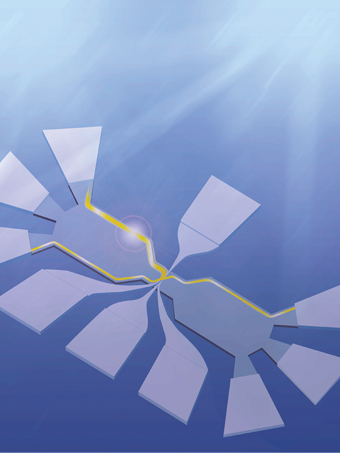When is dividing by four more complicated than dividing by three or five? When the thing divided is the charge of an electron. A decade after they discovered “quasiparticles” with charges of one-third and one-fifth, Weizmann Institute physicists have succeeded in demonstrating, for the first time, the existence of quasi-particles with one-quarter the charge of an electron. This finding could be a first step toward creating exotic types of quantum computers that might be powerful, yet highly stable.
Fractional electron charges were first predicted over 20 years ago, and were found by the Weizmann group some ten years ago. Although electrons are indivisible, if they are confined to a two-dimensional layer inside a semiconductor, chilled down to a fraction of a degree above absolute zero and exposed to a strong magnetic field that is perpendicular to the layer, they effectively behave as independent particles, called quasiparticles, with charges smaller than that of an electron.
The experiment done by research student Merav Dolev in Prof. Moty Heiblum’s group, in collaboration with Drs. Vladimir Umansky and Diana Mahalu and Prof. Adi Stern, all of the Condensed Matter Physics Department, owes the finding of quarter-charge quasiparticles to an extremely precise setup and unique material properties: The gallium arsenide material they produced for the semiconductor was among the purest in the world.
Prof. Moty Heiblum’s research is supported by the Joseph H. and Belle R. Braun Center for Submicron Research. Prof. Heiblum is the incumbent of the Alex and Ida Sussman Professorial Chair of Submicron Electronics.
